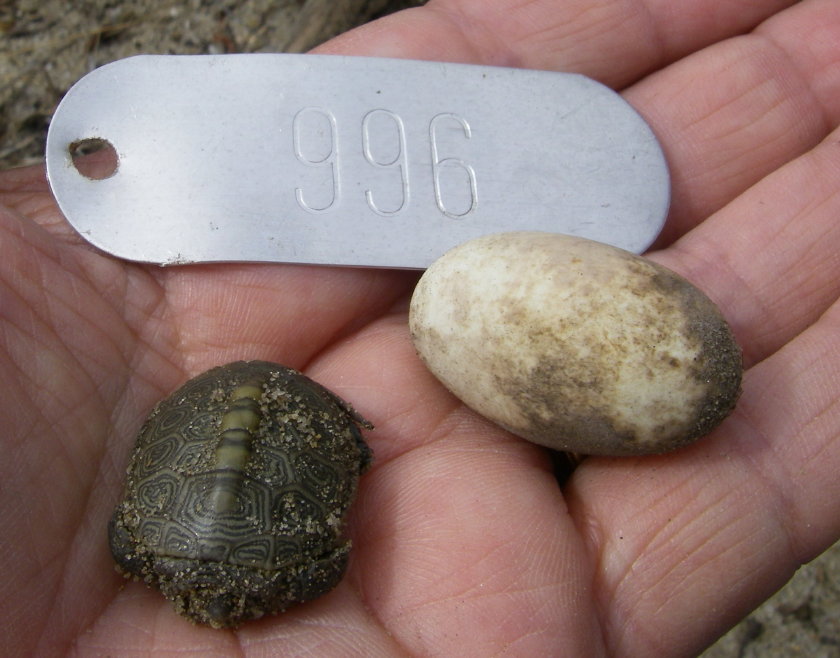Raw, blustery September has gripped terrapin nesting sites on the Outer Cape. As temperatures plunge, hatchlings hunker down in their underground hide-aways, snoozing in the warm darkness, hoping and waiting for a sunny respite to heat up the sand and their bodies for the sprint from nest to safety in the abutting nursery habitat.
Temperatures Begin to Plunge Below 55F Activity Threshold
Yet, while they wait with quiet patience, predators act. Mammals and insects sniff the odor of organic material issuing from the pipped eggshells. These predators take advantage of the hatchlings’ stupor to snatch an easy meal.
Lethargic Hatchling and Potentially Viable Egg
Nest 996 fell victim to secretive plant and insect predators. As we excavated the nest in the morning chill, we encountered egg after egg that had been attacked by roots, stilting embryo development and piercing the shell. Once the egg is cracked, insects stream in and consume the organic material. Near the bottom of the nest, we found a seemingly lifeless hatchling wrapped in an eggshell that we would have instantly discarded as non-viable. Peeling the shell away, we found a healthy, if motionless hatchling. And at the bottom of the nest, we removed one potentially viable egg that has been carefully transplanted to the “second chance” bucket where eggs go to finish incubation and hopefully achieve their full potential.
Excavating Six Sluggish Hatchlings
A few feet away we discovered a concavity in the sand that indicated that a pipped nest might lie beneath. About four inches under the surface we found a half dozen hatchlings, some pipped but still inside eggshells, but others just snoozing the chill away. Check out these sluggish babies once they are excavated as they lie about like cordwood, waiting for sunshine to warm their bodies before dashing to freedom.
September weather in the Great White North can be cruel for tiny hatchlings. But a saving hand can make a world of difference for this threatened species by dramatically increasing the number of live hatchlings that enter the ecosystem each year.

